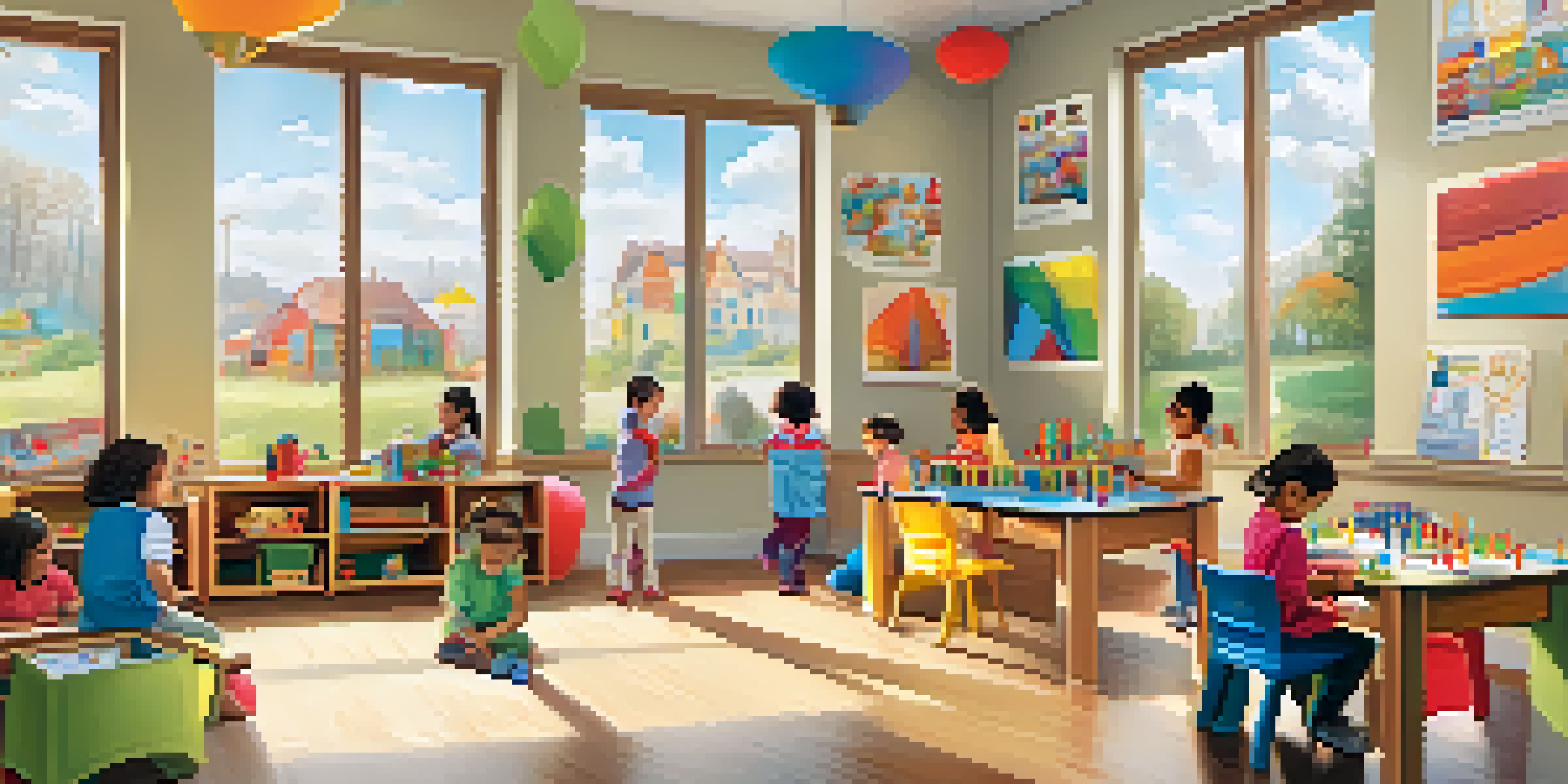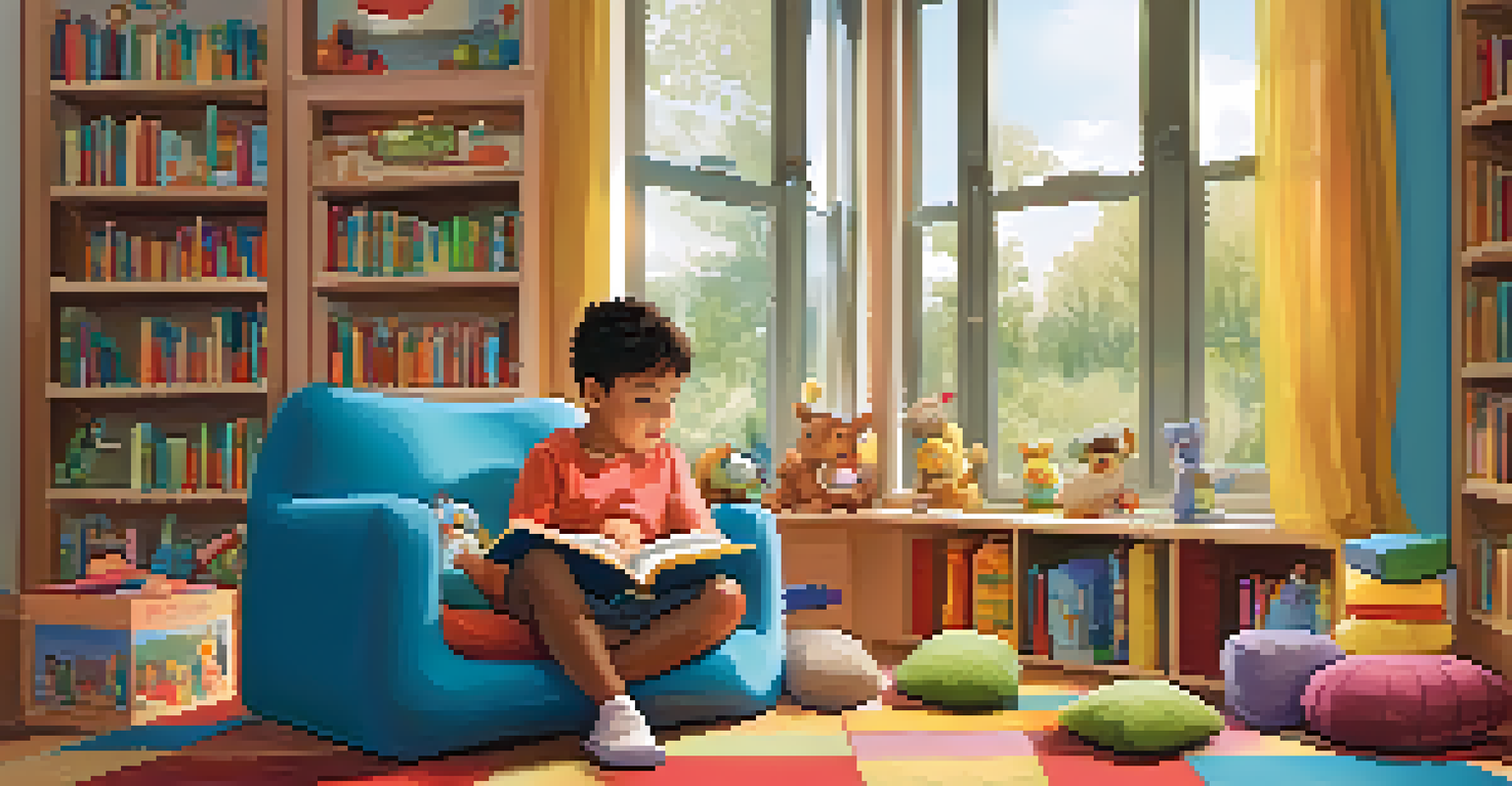Exploring Different Early Childhood Education Approaches

Understanding Early Childhood Education: An Overview
Early childhood education (ECE) is a crucial stage in a child's development, typically focusing on children from birth to age eight. This period is when young minds are incredibly receptive to learning, making the right educational approach vital. Parents and educators often seek effective methods to nurture children's growth during these formative years.
Play is the highest form of research.
In ECE, various approaches aim to foster learning and development through play, exploration, and structured activities. Understanding these approaches can help caregivers choose the best fit for their child's unique needs. Each method offers distinct philosophies that influence how children interact with their environment and peers.
Ultimately, the goal of early childhood education is to create a solid foundation for lifelong learning. By exploring different approaches, we can appreciate the diversity of methods available and how they shape children's experiences. This knowledge empowers parents and educators to make informed decisions that benefit young learners.
Montessori Method: Learning Through Discovery
The Montessori method, developed by Dr. Maria Montessori, emphasizes child-led learning and hands-on experiences. In this approach, children are encouraged to explore their interests at their own pace, fostering independence and self-discipline. Classrooms are designed with specific materials that promote sensory learning, allowing children to engage with concepts through touch and manipulation.

One of the key features of the Montessori method is the mixed-age classroom, where younger children learn from older peers. This setup fosters collaboration and social skills, as children of different ages work together on projects. Teachers act as guides, observing and facilitating rather than directly instructing, which nurtures a child's natural curiosity.
Diverse ECE Methods for Growth
Early childhood education encompasses various approaches, each tailored to nurture children's unique learning styles and developmental needs.
The Montessori approach has gained popularity around the world, with many parents appreciating its focus on individualized learning. By allowing children to follow their interests, this method cultivates a love for learning that can last a lifetime. However, it may not suit every child, so understanding their needs is essential when considering this approach.
Reggio Emilia Approach: Community and Expression
Originating in the Italian town of Reggio Emilia, this approach values community, creativity, and self-expression. It encourages children to explore their environment and express their thoughts through various mediums, including art and storytelling. In Reggio Emilia classrooms, children are seen as capable individuals who actively participate in their learning process.
Education is not the filling of a pail, but the lighting of a fire.
Teachers in this approach observe and document children's progress, using their observations to shape future activities. This method fosters a collaborative atmosphere, where children learn from each other and their surroundings. The emphasis on community involvement also means that parents and local resources play a significant role in the educational journey.
The Reggio Emilia approach highlights the importance of relationships in education, not just between teachers and students but also among peers. This nurturing environment promotes emotional and social development, allowing children to thrive. While it requires a strong commitment from educators and families, the benefits of fostering creativity and collaboration are invaluable.
Waldorf Education: A Holistic Approach
Waldorf education, founded by Rudolf Steiner, focuses on the whole child—mind, body, and spirit. This approach integrates arts, crafts, and movement into the curriculum, recognizing the importance of imagination in learning. Waldorf classrooms often feature natural materials and a rhythmic daily schedule that brings a sense of security and predictability.
In Waldorf education, storytelling and creative play are central to the learning experience, allowing children to engage with concepts in a meaningful way. The curriculum is designed to align with children's developmental stages, emphasizing experiential learning rather than rote memorization. This approach encourages children to develop critical thinking and problem-solving skills.
Montessori: Child-Led Learning
The Montessori method fosters independence and self-discipline by encouraging children to explore their interests at their own pace.
Waldorf education also places great importance on fostering a strong connection with nature. Outdoor play and exploration are integral to the curriculum, helping children develop an appreciation for the environment. While some may find this approach unconventional, many parents value its holistic focus on nurturing well-rounded individuals.
HighScope Approach: Active Learning and Structure
The HighScope approach is rooted in the belief that children learn best through active participation and hands-on experiences. Developed in the 1960s, it emphasizes a structured curriculum that encourages children to make choices and engage in problem-solving. This method incorporates a daily routine that balances child-initiated activities with guided instruction from educators.
One of the unique features of HighScope is the 'plan-do-review' process, where children plan their activities, carry them out, and then reflect on their experiences. This promotes critical thinking and helps children develop a sense of responsibility for their learning. Educators play a crucial role in facilitating this process, supporting children as they explore and discover.
HighScope has proven effective in promoting school readiness and social skills, making it a popular choice among parents and educators. The structured yet flexible nature of this approach allows for a rich learning environment. By empowering children to take charge of their education, HighScope cultivates a sense of independence and confidence.
Play-Based Learning: The Power of Play
Play-based learning is centered on the idea that play is a vital component of a child's development. This approach encourages children to explore, experiment, and engage with their peers through structured and unstructured play. By allowing children to direct their learning through play, educators create a natural and enjoyable environment for discovery.
In play-based learning, children develop essential skills such as communication, teamwork, and problem-solving. These skills are often acquired through collaborative play, where children negotiate, share, and learn from one another. This method also supports emotional development, as children navigate their feelings and build relationships with their peers.
Importance of Play in Learning
Play-based learning emphasizes the vital role of play in children's development, enhancing their communication, teamwork, and problem-solving skills.
Research shows that play-based learning leads to better outcomes in both cognitive and social development. It provides children with the freedom to explore their interests and express their creativity. Parents and educators who embrace this approach recognize the importance of play as a fundamental aspect of learning, setting the stage for lifelong curiosity.
Choosing the Right Approach for Your Child
With so many early childhood education approaches available, selecting the right one for your child can feel overwhelming. It's essential to consider your child's unique personality, interests, and learning style when evaluating different methods. Some children thrive in structured environments, while others flourish in more flexible, play-based settings.
Visiting local schools or programs can provide valuable insights into each approach in action. Observing how teachers interact with children and how the environment supports learning can help parents make informed choices. Additionally, discussing your child's needs with educators can guide you toward the best fit.

Ultimately, the right approach will resonate with both you and your child, fostering a positive and enriching learning experience. Remember that early childhood education is not one-size-fits-all; the best methods will celebrate your child's individuality. By exploring various options, you can create a foundation for a lifelong love of learning.
The Future of Early Childhood Education: Embracing Diversity
As we move forward, the landscape of early childhood education continues to evolve, embracing diverse approaches that cater to different learning needs. Educators and parents increasingly recognize that no single method is superior; rather, a blend of techniques can often yield the best results. This shift towards inclusivity allows for a more personalized educational experience for every child.
Emerging research highlights the importance of social-emotional learning alongside academic skills, prompting many programs to incorporate these elements into their curricula. By focusing on the whole child, educators can better prepare children for the challenges of the future. The integration of technology in early education also opens new doors for interactive and engaging learning experiences.
In this dynamic landscape, staying informed about different approaches will empower parents and educators alike. By embracing the diversity of early childhood education, we can ensure that every child receives the support they need to thrive. Ultimately, fostering a love for learning and a sense of community will benefit not just the individual child but society as a whole.